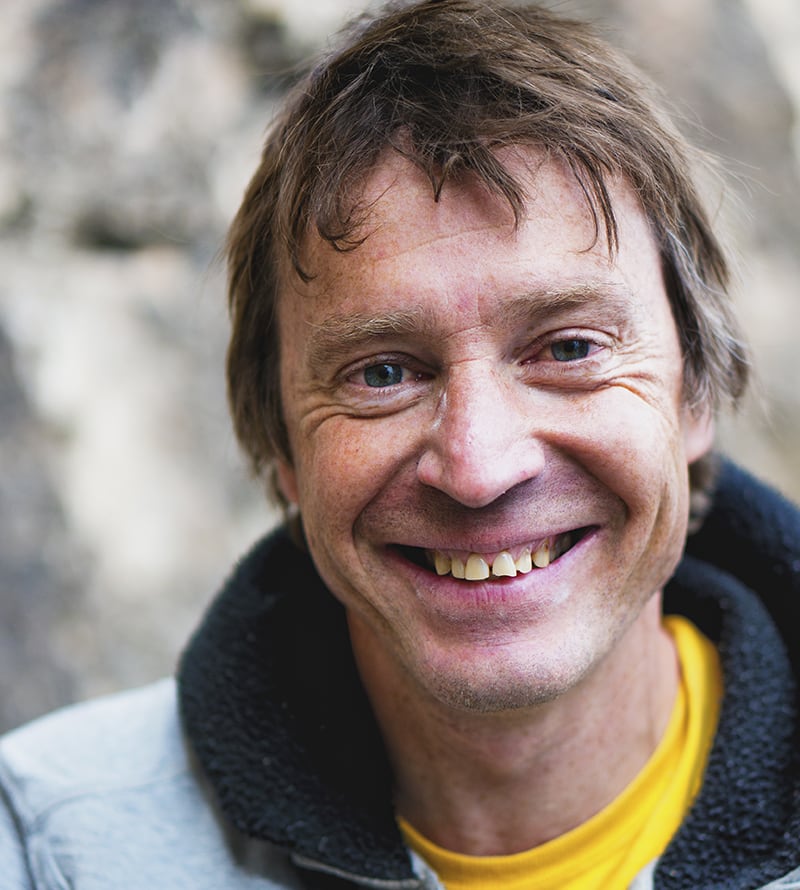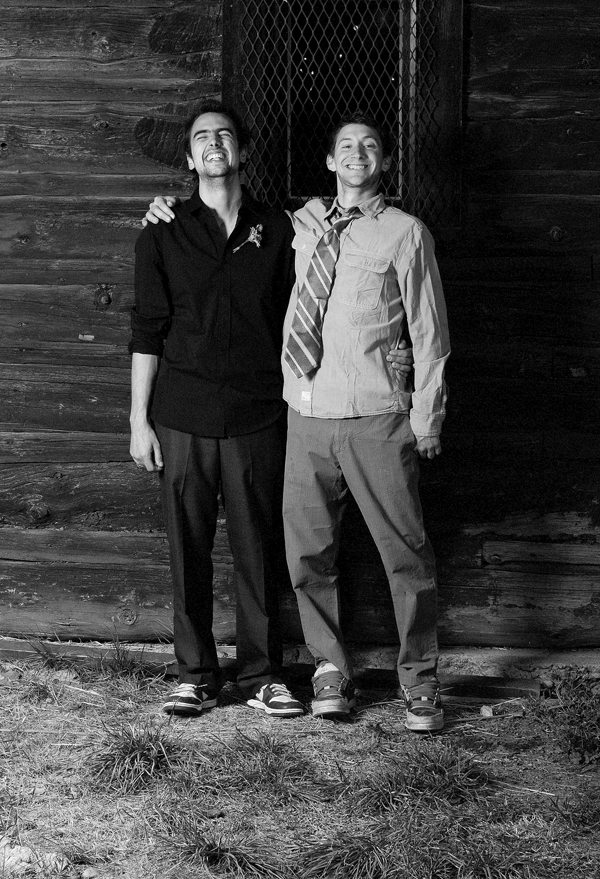Because climbing is a part of life, death is a part of climbing.
With all these so-called “adventure sports,” death can begin to feel quite common. The longer you climb, the more dead people you know. Yet, somehow, we climbers are just as bad at coping with death as everyone else.
When climbers die, especially in sensational accidents such as while off on a faraway Himalayan peak, I’ve noticed that those deceased climbers take on a certain celebrity. What transpires out of that celebrity often makes me uncomfortable, if not cynical.
The clearest example of this phenomenon that I can think of was in the grief-stricken frenzy that swept through Boulder in the aftermath of the deaths of Micah Dash, Jonny Copp, and Wade Johnson. Micah and Jonny, in particular, seemed to become more famous and adored in death than they ever had in been in life—probably to the exasperation of Micah and Jonny’s true inner circle, too. Throughout Boulder, there seemed to be an underlying competition over who knew the departed best (and therefore whose pain was worse) and who could eulogize their deaths most publicly.
Because death can feel so ingrained within the climbing world, when some well-known climber dies, many seem to take the opportunity to feel closer to death—and perhaps, by doing so, they feel as if it takes them closer to climbing.
This morbid phenomenon seems to be taking place with regards to my dead friend Dave Pegg, known to and beloved by many folks in our community. Toward the end of 2014, Dave committed suicide. His death wasn’t climbing related, per se, but he was a climber.

Dave taping up, with Broncos duct tape, for a burn on the Gayness, a 5.14a, which he eventually sent–after six years.
My initial sadness over Dave’s death humbled me, and even turned to moments of anger. That old cliché about how it took Dave’s death to remind me to appreciate all that I have in life was true—and that’s what made me even more upset. I didn’t want Dave to be my cliché.
In the wake of Dave’s death, many climbers tried to wrap their heads around what had happened. Part of me resented those who I sensed were somehow drawn to Dave in death—the way some fawn over celebrities—just to feel something, anything, about themselves.
I overcame those cynical feelings by doing something constructive: I helped plan Dave’s memorial with a few friends. Over a two-week period, we got together for dinners and brainstormed miscellaneous details about what the memorial might look like. But quickly we put down our pens and found ourselves ordering another round of beers in order to relive all the great Dave Pegg stories. Those nights at the pub, planning Dave’s memorial, ended up being some of the best and most cathartic experiences I’ve had.

I took this portrait of Dave right after he sent a new 5.13b slab at the West Fortress. He’d used a mechanical rotary scrubber to clean 100 vertical feet of lichen off of this face. How he knew there was an amazing sequence of crimps under that dirt is beyond me …
After the memorial, I felt a real sense of closure—a concept I’d always heard about but hadn’t understood until experiencing it firsthand. Closure feels … good.
I never gained any new understanding of why Dave killed himself—in a way, the answer to that question doesn’t matter.
But I came to understand something perhaps even more important: that we all must find our own way to grieve a loss, without judging ourselves (or others) or getting bogged down by self-defeating cynical thoughts. Also, we often need to help each other find ways to grieve—because getting that sense of closure is going to be a different experience for everyone.
And most important, doing something productive, giving back to others, always seems to help the most.

Dan on his way to add a 5.14 extension to White Lightening, at the Distillery. Photo: Andy Mann
Last fall, my good friend Dan Mirsky approached me about working on a film project that would commemorate Dave Pegg as a route developer. A year after Dave’s death, Dan was still coming to terms with the new reality that we would never again be seeing our jovial, absent-minded, shit-talking, Bronco’s-loving British friend roaming Rifle while looking for his perpetually misbehaving dogs.
Dan is something of a climbing mentor to me. He taught me a lot about long-term projecting, and therefore, about perseverance and self-belief. But for all the 5.14s that Dan has whittled down and redpointed after long campaigns, he’s never placed a bolt in a piece of virgin rock.

Dan’s idea was to go climb at the Distillery, a crag that Pegg helped develop. Despite being just 10 minutes from my front door, I’d never actually climbed at the Distillery before, though I’d heard tale of a “Living in Fear” style 5.13c that Pegg established, and considered to be one of his finest additions in his own personal pantheon of chossy, Western Slope first ascents.
Part of the mission would be to clean up some of Dave’s gear: a 300-meter static rope and scant draws. The other part would be to complete a new addition: give back to the community through a first ascent. And just as Dan has taught me a bunch about how to redpoint hard (for me) routes, it was pretty cool to teach Dan a bit about how to bolt rock—a skill that I learned, in part, from my time spent with Dave Pegg.

It was cool to be at the Distillery and feel Dave’s spirit everywhere, and pass on some of that bolting know-how that I learned from Dave onto Dan. Giving back, being productive, doing something meaningful–this is what it’s all about.
The result of this project is now live on Black Diamond TV, and if you haven’t watched it yet, I urge you to check it out. I also wrote a story about Dave and teaching Dan how to bolt for Black Diamond, so check that out, too.
The theme of the story is aspiring to lead a wide life, as opposed to just a long one. It’s a great message, but what’s been so cool for me to witness is how true this concept is. A year and a half after Pegg’s death, his life continues on: through inspiration, through memory, and even just through climbers like Dan seeking closure in meaningful, creative ways. After all this time, Dave Pegg continues to inspire.
I reached out to Dan to ask him to share some of his thoughts about Dave, death, and this whole experience.

Me & Dan
What does the Western Slope of Colorado represent to you, and what is its place in the climbing world? And how did Dave Pegg factor into this region?
The Western Slope is my climbing home. It’s not the first place where I climbed but it’s where I found my identity as a climber. Although I don’t live on the Western Slope anymore, I still consider myself a part of the climbing community there and I never feel more at home than when the paved road turns to dirt and I see the familiar orange, grey and blue walls of Rifle Mountain Park.
Western Slope climbing, particularly Rifle, has become recognized in the U.S. and around the world for the awesome concentration of limestone sport climbing and has become a very popular summer road trip destination.
Dave was a tremendous presence in the Western Slope climbing community: through his guidebooks, his route development of entirely new areas, and his work with city of Rifle to lift a bolting ban in Rifle, which led to a whole new era of development in the canyon. Dave’s efforts really transformed the Western Slope region into a legitimate climbing mecca, not just the area surrounding Rifle.
So many people get sucked in to just going to Rifle. You’re probably one of them. Did this experience of going to the Distillery open your mind in any way to trying to visit other areas around here?
Definitely, I was really impressed with the work Dave and Josh and others had put into the Distillery and how good the routes were. I am motivated to periodically leave my current Rifle project behind and go explore the other miles of limestone cliffs that have been developed in the area and maybe find some new undeveloped lines of my own
Do you think route development is going to be a new passion for you?
I am definitely motivated to keep developing new routes. I still feel I have a lot to learn but I am really gratefully to have had the experience of learning the ways of the chossaneer. I am grateful to Dave for being the motivation even if it came out of such a tragic set of circumstances.
I am also really appreciative of the time and energy you and Lee spent with me, showing me how to wield the drill and the hammer and do the lords work.
What’s your favorite Dave Pegg memory?
A couple winters ago, my girlfriend Katy and I were living in our Airstream trailer out in the desert by the Cathedral in southern Utah. Dave got in touch with me because he wanted to come out and climb but didn’t have a partner and I invited him to join us. He drove his truck camper out and we spent four days or so climbing, camping, laughing, drinking—just the three of us. It was really fun and special.
I remember at the time he was really psyched on that song “Black and Yellow.” It was pretty funny listening to a Brit try to rap. He made a badass curry one night, and on another night we made a Mexican feast and fresh margaritas. He was pretty psyched on those; I think we drank the whole bottle.
He also took some really cool photos of me on this route I was trying up there. Then the weather got bad and Dave bailed in classic fashion with quickdraws and a rope still hanging on the route. When I realized he wasn’t coming back anytime soon, I took them down and brought them back to him in Colorado. He’d forgotten all about them.
What’s your favorite Dave Pegg route?
I really like Tomb Raider, although 100 Proof at the Distillery might be even better.

Pegg on the FA of Tomb Raider (5.13d). Photo by Nathan Smith.
What’s next for you as a climber?
I want to climb a 5.14d this year, do some more route development and hopefully take another international trip. Maybe to Sardinia to climb some multi-pitch limestone sport routes like Hotel Supramonte.




0 Comments